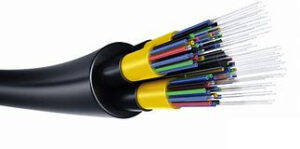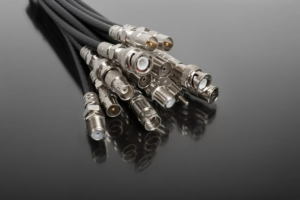In the 21st century, the ideal goal is to completely eliminate the use of network cables and live in a world where everything is managed wirelessly. It will be much easier to manage servers without cables to bother with,
and we won’t have to waste time labeling and tracking hundreds of cables.
Until that time comes, we are stuck with old-fashioned network cables to set up our servers,
transfer important data, and operate the machines that are critical to our business.
Therefore, it is useful to have a general understanding of the types of cables currently in use and their
purposes in the IT industry.
Twisted Pair
These are the cables most commonly used for Ethernet purposes, they are called “twisted pair” because there are pairs of wires twisted together in the cable, this is done to prevent electromagnetic interference from external sources and other nearby pairs.
There are two main classifications of twisted pair cables:
- Shielded Twisted Pair (STP)
- Unshielded Twisted Pair (UTP)
STPs have an additional layer of shielding that makes them more resistant to external interference and therefore have greater bandwidth maximization capabilities than UTP.
The downside to this is that they are heavier and more costly, which is why their main use is in high-end applications where preventing interference is a top priority.

UTP is related to categories that are separated from each other based on the amount of data transferred per second, the categories used by the standard are Category 5e (1 Gbps) and Category 6 (10 Gbps) as the older categories have become obsolete as the performance standards do not meet the modern needs of the IT industry.
Coaxial Cable
For those who grew up a few decades ago, you would have seen these cables used to connect TVs to home antennas and to set up the first Ethernet networks. They work by covering copper wires with insulation and other forms of shielding. In addition to their weight and thickness, their sub-par data transfer rates (10 Mbps) led to their phase-out when twisted pair cables came into use. These cables are now obsolete in use, but they are included in this article because some buildings may still use these ancient cables.

Fiber Optic Cables
These cables work very differently to the cables described so far,
with a thin glass cylinder surrounded by multiple layers of coatings to provide protection and prevent interference.
Unlike other cables, fiber optic cables use pulses of light to transmit data,
and while these cables may cost more, they can transmit information at extremely fast speeds in high-traffic environments.

There are two types of fiber optic cables:
- Single-mode
- Multi-mode
- Single-mode fiber allows data to be transmitted over long distances by using a single beam of light, multi-mode fiber transmits data over shorter distances by using multiple beams of light simultaneously.
Universal Serial Bus (USB) Cables
While these types of cables are commonly used to connect external devices to a computer for personal use,
there are special adapters that allow an Ethernet cable to be connected indirectly to a
USB port and work properly, these are often used as a temporary setup in network cabling until
a more reliable type of cabling, such as STP/UTP or fiber optic, can be properly installed.

network cables:What Are the 4 Types of Network Cables?





